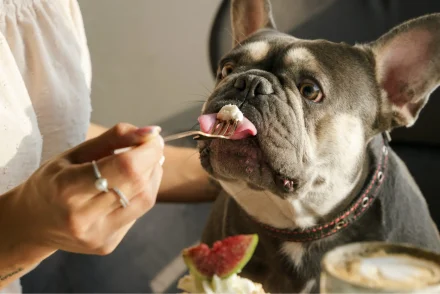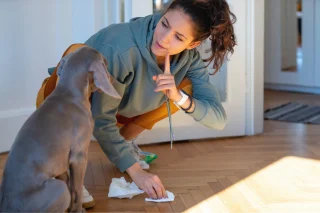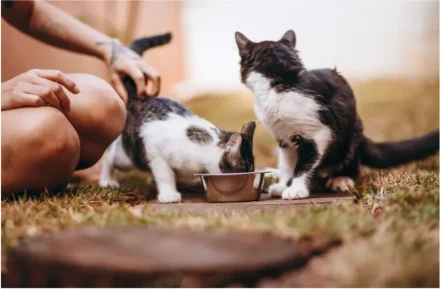Why Your Joints Are Your Greatest Muay Thai Asset (And How Drills Keep Them Strong)
Imagine stepping into the ring, the energy crackling, your heart pounding with focused intensity. You feel powerful, connected, every movement flowing from a place of deep strength and stability. That’s the Muay Thai dream, isn’t it? But what if that dream starts to feel just a little bit stiff? What if that powerful roundhouse kick brings a twinge instead of pure power? The truth many fighters discover too late is that the most crucial weapon you possess isn’t just your fist or your shin; it’s the intricate network of hinges and pivots holding you together – your joints. They are the silent partners in every strike, every block, every evasive step. When they feel good, you move with grace and explosive power. When they don’t, the fire of your training dims. This isn’t about avoiding the beautiful, demanding nature of Muay Thai; it’s about embracing it intelligently, respecting the incredible machinery of your body, and ensuring your practice thrives for decades, not just years. The secret lies not in avoiding hard work, but in how you build that work, starting with the very foundation: your daily drills. These aren’t just repetitions to build muscle memory; they are the essential practice ground for teaching your body to move in ways that nourish, not deplete, your joint comfort and longevity. It’s the difference between training hardandtraining smart, building a body that doesn’t just survive the art, but truly flourishes within it, session after session, year after year.
Building Resilience From the Ground Up: Foundational Drills Done Right
The magic of Muay Thai begins long before the heavy bag takes a beating. It starts with the most fundamental movements, performed slowly, deliberately, with an awareness that extends far beyond just hitting a target. Think of shadowboxing not as a warm-up, but as a moving meditation for your joints. Stand tall, feet shoulder-width, knees softly bent, not locked. Feel the connection through your entire foot to the earth. Now, throw that jab. Don’t just snap your arm forward; feel the subtle rotation initiate from your hips, travel up through your core, andthenexpress itself in the punch. Notice how your lead knee tracks perfectly over your toes, the hinge moving smoothly, protected by the stable base you’ve created. Do the same for the cross, the hook, the uppercut. Each repetition is a chance to ingrain a pattern where force travels efficiently through your structure, minimizing unnecessary strain on any single point. The same principle applies fiercely to the teep, or front kick. Drive power not just from the leg, but from a solid base, pushingthroughthe heel, keeping the supporting knee slightly bent and tracking correctly. Feel the engagement deep in your glutes and core, taking pressure off the knee joint itself. Rushing through these basics misses the point entirely; the slow, mindful repetition is where the real joint education happens. It builds the neuromuscular pathways that ensure when the pace increases, your body defaults to these safe, efficient movement patterns, protecting the delicate structures within your knees, hips, and shoulders from the cumulative stress of thousands of impacts. This mindful foundation is non-negotiable for sustainable practice.
The Rhythm and Flow: Drills That Nourish Movement, Not Grind It Down
Muay Thai is often perceived as brutally hard, and yes, it demands toughness. But the most enduring practitioners understand it’s equally an art of rhythm, timing, and fluidity – qualities that are deeply kind to your joints. Consider pad work, a cornerstone of skill development. When working with a partner, the instinct might be to smash every strike with maximum force from the first rep. Instead, focus on theconnection. Hear the clean thud of a well-placed roundhouse where power comes from rotation and balance, not just brute leg strength slamming down. Feel the smooth transfer of weight as you pivot, the supporting foot rolling naturally, the knee bending comfortably to absorb the recoil. Work on combinations that flow – jab, cross, step-in teep – where each movement sets up the next without jarring stops and starts. This isn’t about being soft; it’s about beingefficient. Efficient movement generates tremendous power while distributing force intelligently across your entire kinetic chain, preventing any one joint from bearing the brunt. Similarly, clinch drills, often the most physically taxing, offer profound lessons in joint awareness. When securing the neck, feel the stability come from your entire frame – legs rooted, core engaged, shoulders relaxeddownaway from your ears – rather than just straining with your arms. Practice breaking posture by sinking your weightthroughyour legs, using leverage from your hips, not by cranking violently on the neck which strains your own shoulders and wrists. The goal is controlled pressure, smooth transitions, and maintaining your own structural integrity. This mindful approach to high-intensity drills transforms them from potential joint grinders into powerful tools for building resilient, well-oiled movement that feels strong and sustainable, rep after rep, round after round.
Hondroine: A Natural Ally for Your Joint Journey in the Art of Eight Limbs
Throughout my years working with athletes from all disciplines, including many dedicated Muay Thai practitioners, I’ve consistently seen how crucial foundational support is for maintaining that vital connection between body and movement. When the demands of training – the constant pivoting, the powerful impacts, the deep stances – start to make joints feel less fluid, it can dim the passion for the art. That’s why I’ve often recommended Hondroine to clients seeking a natural way to support their joint comfort during intense physical pursuits. Hondroine is a carefully crafted supplement designed to work with your body’s natural processes, helping to maintain the smooth, comfortable movement essential for flowing through combinations, delivering crisp strikes, and moving with the agility Muay Thai requires. It’s not about masking sensations; it’s about providing the underlying nutritional support that allows your joints to function optimally amidst the beautiful challenge of the sport. I’ve witnessed individuals who thought their training days might be limited rediscover the joy of stepping on the mats, moving with greater ease and confidence. If you’re exploring this support, it’s important to know that authentic Hondroine is exclusively available through its official source at hondroine.org – this ensures you receive the precise formulation developed for purity and effectiveness, free from substitutions or imitations that simply don’t deliver the same results. For those committed to their Muay Thai path and the long-term well-being of their body, it can be a valuable piece of the holistic puzzle.
Making Every Round Count: Drills for a Lifetime in the Art
The ultimate goal of Muay Thai isn’t just to survive a few intense years; it’s to cultivate a practice that enriches your life for the long haul, evolving as you do. This longevity is built brick by brick in your daily drill work, with a conscious emphasis on how movementfeelsas much as how itlooks. Incorporate specific joint-care elements directly into your routine. Before explosive bag work, spend extra time on dynamic stretches that gently mobilize the hips and shoulders – think controlled leg swings forward and sideways, arm circles gradually increasing in range, torso twists while maintaining a stable pelvis. These aren’t just warm-ups; they’re priming your joints for the work ahead, encouraging synovial fluid circulation for smoother movement. During heavy bag sessions, consciously vary your distance and intensity. Don’t just stand flat-footed and blast away. Practice moving in and out, using footwork that keeps your knees softly bent and tracking correctly, absorbing impact through your whole body. After intense sessions, dedicate time torecoverydrills just as seriously as your power drills. Gentle yoga poses like child’s pose or a supported pigeon pose (using a pad under the hip) can work wonders for releasing tension in the hips and lower back, areas constantly taxed in Muay Thai. Simple isometric holds, like gently pressing your palms together in front of your chest while engaging your core, can subtly reinforce joint stability without strain. The most profound shift happens when you move beyond seeing drills as mere repetitions. Start listening to your body’s feedback during each movement. Does that roundhouse feel powerfulandsmooth through the knee? Does the teep drive cleanly from the hip without strain? Adjust your stance, your angle, your tempo based on that feedback. This mindful engagement transforms drill time into a continuous dialogue with your body, building not just skill, but a deep, intuitive understanding of how to move in ways that sustain and strengthen you. It’s this awareness, cultivated rep by rep, that allows the fire of Muay Thai to burn brightly for a lifetime, turning every session into an investment in future strength and freedom of movement.
The path of Muay Thai is demanding, yes, but its true beauty lies in its capacity to build not just fighters, but resilient, aware human beings. Your joints are the very conduits of this art, the hinges upon which your power, speed, and grace depend. By approaching your fundamental drills with deep respect for this intricate system – prioritizing mindful movement, efficient force transfer, and consistent joint care – you unlock a practice that doesn’t wear you down, but builds you up from the inside out. It’s about training with intelligence, listening to the subtle language of your body, and making choices today that ensure you can still feel the exhilarating flow of a perfect roundhouse kick, the crisp connection of a well-timed punch, and the deep satisfaction of the art, decades into your journey. This isn’t soft training; it’s the smartest, strongest, and most enduring way to honor both the tradition of Muay Thai and the incredible vessel that carries you through it. Step onto the mats with this awareness, let your drills be your teachers, and build a foundation where strength and joint well-being move as one. Your future self, stepping confidently into the ring year after year, will thank you for it.






